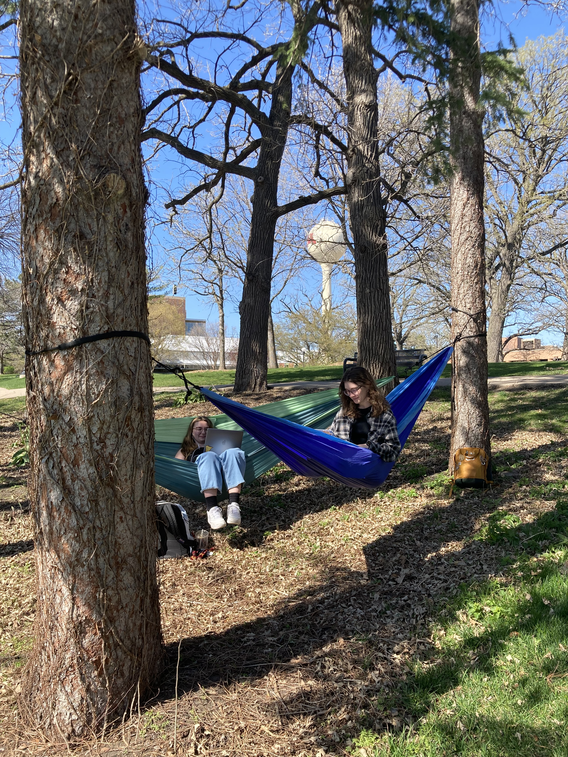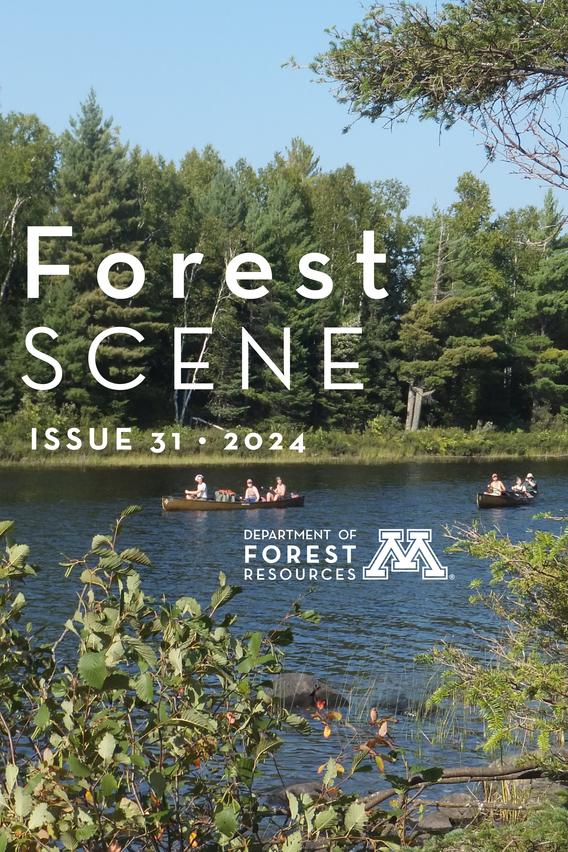This article is part of the Forest Scene newsletter, Issue 31.

The UMN Twin Cities campus, co-located in Minneapolis and St. Paul, was officially designated a Tree Campus in Higher Education by the Arbor Day Foundation last spring, a recognition of its abundance of well-cared-for trees.
Across the US, college campuses must follow a series of guidelines to qualify for this annual recognition, including working with a campus tree advisory committee and campus-wide tree care plan, verifying the plan’s dedicated annual expenditures, observing Arbor Day, and hosting a service-learning project that engages the student body.
UMN Twin Cities was only missing one component – the advisory committee – thanks to UMN Landcare’s Twin Cities Campus Tree Management Plan and decades of forestry students organizing UMN Arbor Days. The annual planting event has been led by the class Arboriculture: Selection and Management of Trees since 1998. That was the first year that students, in close collaboration with Landcare, helped select and plant trees on campus and educate the public about them. The initial planting was huge – nearly 20 trees went into the ground on the Twin Cities campus in St. Paul, including ironwoods, white spruces, and white pines in front of Green Hall, and both bicolor and bur oaks on the south lawn.
“One of the reasons I engaged students in service projects on campus is you can sit in a classroom and listen to a professor and pretty soon things become rhetorical,” says Professor Emeritus Gary Johnson, who previously taught Arboriculture. “You can talk about the importance of [things], but it isn’t until students actually do it – select plants and go through purchasing – [that] it becomes meaningful.”
More than 200 trees have been planted across the Twin Cities campus thanks to UMN Arbor Day celebrations. Planting sites are selected following Landcare’s long-term campus forestation plan. The number and species of trees vary each year depending on the needs of the site – and the resources available to care for the trees moving forward.
Landcare is an important partner for every UMN Arbor Day, providing plant materials, mulch, trucks, tools, wheelbarrows, and staff to help with planting. They also finish up any remaining work following the celebrations. Elliot Redman, Landcare Supervisor, further contributes by advising Arboriculture students on tree selection.

The newly formed Tree Campus advisory committee is made up of 12 people representing a variety of experiences, from current undergraduate and graduate students to faculty in the Horticulture, Landscape Architecture, and Forest Resources departments. Twin Cities Director of Campus Sustainability Kate Nelson, Landcare Assistant Director Tom Ritzer, Redman, and Johnson are involved, too, as are community members living in the Southeast Como neighborhood adjacent to the campus in St. Paul.
Outside of beautifying campus and providing opportunities to practice arboriculture skills, UMN Arbor Days help students form strong ties to their alma mater, too. After all, the trees they select, plant, and care for often become "friends" that they can check in on for many years.

The Forest Scene newsletter is published biannually in the spring and fall, featuring stories and updates from the Department of Forest Resources. Read Issue 31 (2024):
